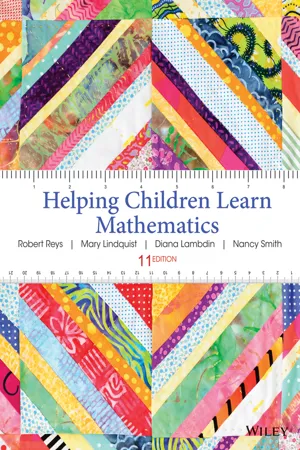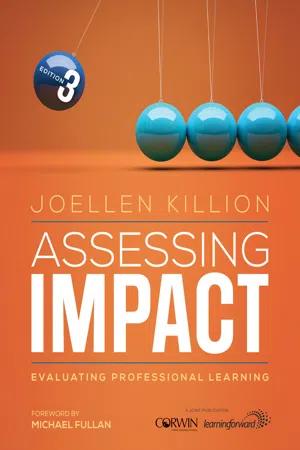Mathematics
Data Interpretation
Data interpretation involves analyzing and making sense of data to draw meaningful conclusions. It encompasses techniques such as statistical analysis, visualization, and pattern recognition to extract valuable insights from data sets. In mathematics, data interpretation is crucial for understanding real-world phenomena and making informed decisions based on empirical evidence.
Written by Perlego with AI-assistance
Related key terms
1 of 5
6 Key excerpts on "Data Interpretation"
- eBook - PDF
Data and Analytics in Accounting
An Integrated Approach
- Ann C. Dzuranin, Guido Geerts, Margarita Lenk(Authors)
- 2022(Publication Date)
- Wiley(Publisher)
As a student I didn’t practice doing that. I was just focused on getting the right answers and getting a high grade. 8-2 CHAPTER 8 Interpreting Data Analysis Results 8.1 How Do We Draw Conclusions from Data Analysis? LEARNING OBJECTIVE ➊ Compare data analysis interpretation and data exploration. Data analysis interpretation is the process of evaluating an analysis to understand and explain its meaning. Similar to interpreting a weather forecast when planning an outdoor party, the insights gained from data analysis interpretation help us make good business decisions. Data analysis interpretation and data exploration probably seem very similar. In fact, you are interpreting even as you are exploring the data. Data Analysis Interpretation Versus Data Exploration The goal of data exploration is understanding the data, whereas Data Interpretation involves under- standing the analysis. The focus, however, is what differentiates exploration and interpretation. An example can illustrate the difference. Imagine conducting an audit of accounts receiv- able. The client has given the audit team access to the available accounts receivable data. An excerpt from the data is shown in Illustration 8.1. The first step is exploring the data to under- stand it. Recall that data exploration is a process with four steps: 1. Identify questions about the data. 2. Identify data relationships. 3. Explore data relationships. 4. Generate insights. The data could be explored to calculate the total accounts receivable by aging category, and the data and payment information could be used to identify relationships in the data: • Column G represents accounts where the customer disagrees with the invoice amount. - eBook - PDF
- Robert Reys, Mary Lindquist, Diana V. Lambdin, Nancy L. Smith(Authors)
- 2014(Publication Date)
- Wiley(Publisher)
The student is able to predict or make inferences. For example, “Which player had the smallest range? Which player is most likely to score a lot of points?” Data may also be interpreted by describing the shape of the data in the graph. You might have students use informal lan- guage such as “clumps,” “holes,” and “spread out” to describe features of the data. You may want to create a word wall, or visible word list, for students to refer to when describing data. Then encourage students to conjecture why the data look the way they do. This encourages students to read beyond the data. Another beneficial graphical interpretation task is to give students mystery graphs that are missing some of their labels and have students predict what the data might be. For example, groups of students may have each measured a body part such as arms, legs, or distance around heads. A graph that contains measurements from 18 to 24 inches is dis- played. Students could be asked to hypothesize which body parts might be illustrated on the graph. This activity also reinforces the importance of using labels on graphs. Figure 17-31 Calculation of mean absolute deviation for basketball players’ scores for the last 10 games. INTERPRETING RESULTS DATA SENSE Once data have been collected and displayed, they should be analyzed and interpreted. Just as children develop knowl- edge about numbers or number sense, they can also develop knowledge about statistics or data sense. Data sense is grad- ually developed as students formulate questions, collect data, construct graphs, find descriptive statistics, and inter- pret them in a variety of contexts. Students with data sense are able to determine how data should be interpreted. They are able to read and evaluate statistical information being presented, such as material presented by the media. Students also display data sense when they are able to use statistical language when reasoning about data. - eBook - ePub
Assessing Impact
Evaluating Professional Learning
- Joellen Killion(Author)
- 2017(Publication Date)
- Corwin(Publisher)
9 Interpret DataPlanning Phase
- Assess evaluability
- Formulate evaluation questions
- Construct the evaluation framework
Conducting Phase
- Collect data
- Organize, analyze, and display data
- Interpret data
Reporting Phase
- Report, disseminate, and use findings
- Evaluate the evaluation
Closely linked with data analysis is Data Interpretation. Many, in fact, view analysis and interpretation as a single step, yet they are treated separately in this process because the distinction is significant. Interpretation is the meaning-making process that comes after the data have been organized, counted, sorted, analyzed, and displayed and requires the engagement of stakeholders and preferably program participants. At this step of the process the evaluator seeks to answer the following questions:- Who will be involved in the Data Interpretation process?
- What do these analyzed data mean?
- How do stakeholders and participants interpret these analyzed data?
- What do these analyzed data mean in terms of the program’s future?
- What recommendations can we (the evaluator, stakeholders, and participants) make about the program and its effects?
Interpretation, by definition, involved going beyond the descriptive data. Interpretation means attaching significance to what was found, making sense of findings, offering explanations, drawing conclusions, extrapolating lessons, making inferences, considering meanings, and otherwise imposing order on an unruly but surely patterned world. The rigors of interpretation and bringing data to bear on explanations include dealing with rival explanations - No longer available |Learn more
Completing Your EdD
The Essential Guide to the Doctor of Education
- Iona Burnell Reilly, Jodi Roffey-Barentsen(Authors)
- 2020(Publication Date)
- Emerald Publishing Limited(Publisher)
7ANALYSING AND INTERPRETING DATA
Jim CrawleyINTRODUCTION
With appropriate, carefully planned, high-quality data analysis and interpretation, you will almost always get the best from your data and will take significant steps towards the answer/s to your research question/s and meeting your research objectives. Researchers usually find the process of analysing and interpreting the data they have gathered one of the most rewarding parts of the whole experience. This stage of your research should be exciting, informing, absorbing and fulfilling. From the moment your first piece of data has been collected, analysis and interpretation start to take place, even if at that early stage this takes place informally and mainly in your head. The early analysis and interpretation of data will give you a strong impression of the success (or otherwise) of the research to date. As the process continues, the stories from your data unfold. When data analysis is successful, the stories unfold naturally and clearly, and they will illuminate and bring your findings to life as you have planned, intended and hoped.There are, of course, also challenges with analysing and interpreting data. You may, like many researchers before you, feel weighed down under the pressure of analysing large (or small) quantities of complex data, and the stage of your research which was supposed to lead smoothly to your discussion and conclusions becomes a difficult situation where alterations, additions, shifts of emphasis and even changes of direction may need to be made. However well you prepare and organise for data analysis and interpretation, part of the excitement of carrying out research is that it can never be entirely predictable. It is highly likely that you will encounter at least some level of complication with this stage of research in just the same way as you may with others but resolving questions, reducing uncertainties and solving problems successfully with your data analysis and interpretation is an important step on the way to completing your thesis. Engaging in critically analytical discussions and revealing interesting and enlightening conclusions is a central part of doctoral work which will lead your thinking into coherence and originality, and it is through the stage of analysing and interpreting data that this will largely happen. - eBook - ePub
- Alan Berkeley Thomas(Author)
- 2004(Publication Date)
- Routledge(Publisher)
12 Data analysis and interpretationThe range of techniques available for the analysis and interpretation of both quantitative and qualitative data is enormous. A full account of statistical methods alone would fill many volumes. The purpose of this chapter is therefore to provide an overview of the main methods of analysis and to indicate their potential applications rather than to give detailed instruction in how particular statistics are calculated or how to undertake textual interpretation. Guidance to sources dealing with these topics in depth is given at the end of the chapter.Basic processes: describing and explaining
Once the dataset has been constructed, its contents must be analysed and interpreted. The accumulated body of data does not speak for itself. At this stage the researcher has to confront two key problems:- How can the data be transformed from an extensive assortment of raw materials into a concise and meaningful description of what has been observed?
- Once a valid and coherent descriptive account has been constructed, how can it be connected with the problem field? Have new descriptive materials been created? Have theoretical expectations been tested? Has a new theory or causal model been constructed?
These questions must, of course, be tackled in relation to the overall objectives of the study, but the general aim of analysis and interpretation is to enable the analyst to ‘see the wood for the trees’. The analyst seeks structure in the data: generalities and commonalities within all the variety and the differences that are displayed in the dataset, and linkages, patterns and connections among elements, variables, categories and types.Data can mount up alarmingly as a study progresses: datasets may swell and field notes bulge to the point where it may seem impossible to make any sense out of the material. The data must undergo data reduction in order to condense and summarize them so that they are meaningful in terms of the study’s objectives. - eBook - PDF
- Peter Stokes, Tony Wall(Authors)
- 2017(Publication Date)
- Red Globe Press(Publisher)
1 74 O BJE C TIVE S S uccessful completion of this chapter provides guidance on : • How to understand the various issues involved in, and approaches to, data analysis ; • How to appreciate the strengths, weaknesses and issues surrounding particular d ata analysis approaches ; • How to develop and understand the relationship o f reliability, viability and gener-a l isa b i l ity in re l ation to d ata ana l ysis processes . 5 DATA ANALYSIS AND INTERPRETATION INTR O D UC TI ON Having designed your study you then proceed into the f ield or research situation i n or d er to gat h er t h e d ata t h at w ill b e requ i re d to respon d to your t i t l e, a i ms an d i d h h d h ill b i d d i l i d ob jectives an d researc h questions. Once t h e d ata are gat h ere d , t h e next p h ase is to look at these data, process them and then attempt to come to some decisions about what the data mi g ht indicate and mean. The len g th y processes that these actions e ntail underline that it is important not to undervalue or waste all the effort that you have put into gathering the data. Therefore, it is vital and worthwhile taking time to think care f ully about how you are going to approach the analysis phase o f your research. The aim o f this section is to assist you in this task . WHAT I S DATA ANAL Y S I S? When the information, observations, recordin g s or statistics (i.e. the data) have b een gathered for a piece of research, pro j ect or dissertation, it is sub j ected to 175 DATA ANALY S I S AND INTERPRETATI ON examination b y the researcher (Bazele y , 2013). This involves carr y in g out identified and chosen processes on the data in order to, amon g other thin g s, identif y: • p atterns ; • salient f eatures ; • relative size and importance of certain features in relation to various variables; • mean i ng ; • signi f icance; • in f ormation, in f erences and implications . You may f eel reasonably con f ident in the design and f ield aspects o f your study.
Index pages curate the most relevant extracts from our library of academic textbooks. They’ve been created using an in-house natural language model (NLM), each adding context and meaning to key research topics.





